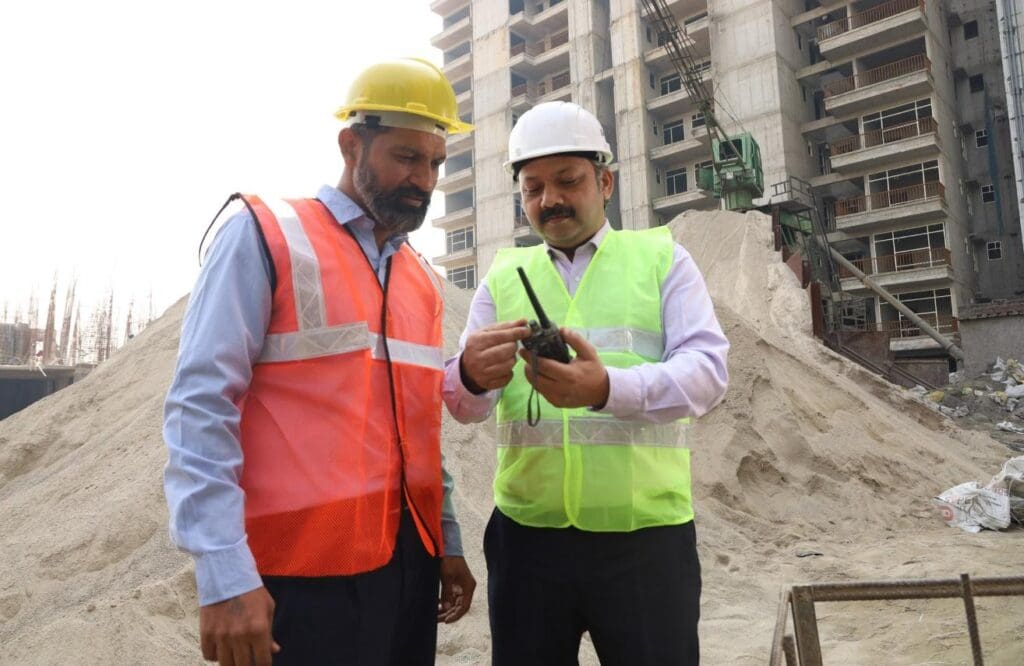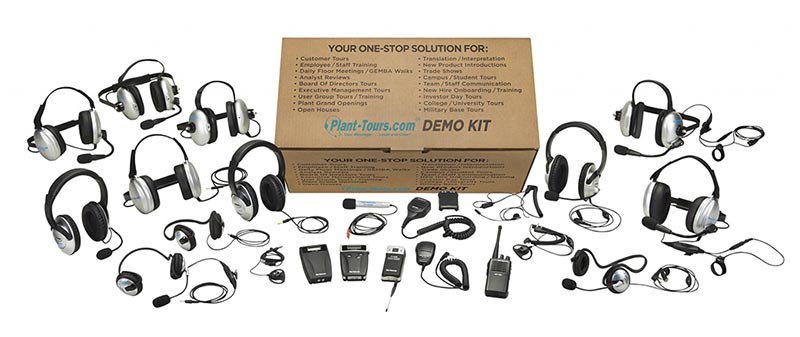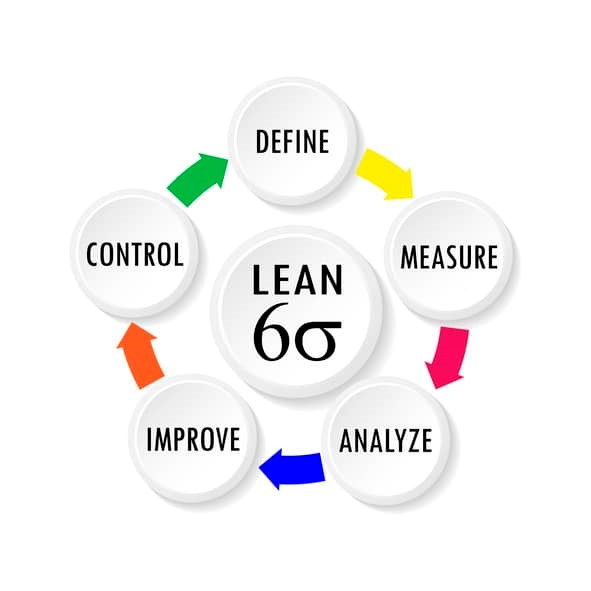In a world where communication technology is evolving at a breakneck pace, the radio has remained a timeless player in industrial operations. It facilitates swift and accurate communication in industries like manufacturing and construction. However, as we have found over the last 20 years, the power of these devices is fully harnessed only when users adhere to radio etiquette.
These radio communication rules ensure that every transmission is clear, concise, and effective. The absence of this discipline can lead to chaotic work environments where miscommunications lead to inconveniences and potential hazards.
As industries evolve and communication technologies advance, mastering two-way radio etiquette will remain pivotal in fostering a culture of clarity and precision in high-stakes environments. Below, we’ve compiled the ten basic rules of radio communication.
The Importance of Clear Communication
Our clients in industrial settings often acknowledge that clear communication is the cornerstone of safe and efficient operations. With effective communication, they have experienced the following benefits:
- Minimized the risk of misunderstandings that can lead to costly mistakes
- High levels of productivity by streamlining information flow and decision-making processes
- Preventing accidents by alerting workers to potential hazards and ensuring swift and appropriate responses
- Enhancing team coordination, especially in settings where timing and precision are crucial
- Cutting down on time spent in cargo handling
- Synchronizing tasks, leading to enhanced efficiency in project execution
Basic Radio Etiquette
Mastering two-way radio etiquette is essential for every radio user, whether they’re operating a two-way radio or walkie-talkie on a bustling construction site or coordinating efforts in a manufacturing plant. Here are the foundational principles of basic radio etiquette:
1. Use the Correct Call Sign
Every radio user should start their transmission with the correct call sign. A call sign is a unique identifier assigned to each radio user or station, functioning much like a name in a conversation.
For instance, in a busy manufacturing facility, using a unique call sign such as “Delta-One” for the production manager and “Echo-Three” for the maintenance team helps in directing communication accurately and efficiently. This clear identification is crucial in preventing overlapping conversations and ensuring critical messages are not missed or misdirected.
2. Keep Messages Brief and to the Point
Brief messages prevent unnecessary clutter on the airwaves, allowing for quick and clear understanding. Brevity is especially important in high-pressure industrial environments, where every second counts. This approach saves time and reduces the likelihood of misunderstandings that can occur with longer, more complex messages.
3. Use Plain English and Avoid Jargon
This practice ensures that all listeners easily understand the message, regardless of their background or expertise. Remember that English is the international radio language, except in specific situations where users are licensed to communicate in a different language.
However, the principle remains the same even when using other languages: opt for simplicity and clarity over complex terminology. This approach fosters better understanding and efficiency in communication across various departments and teams in a workplace.
4. Speak Slowly and Clearly
Speaking slowly is particularly important in noisy industrial environments, where background sounds can easily muffle or distort spoken words. By articulating each word distinctly and maintaining a measured pace, the radio user ensures that their message is understood correctly the first time. This approach reduces the need for repeating messages and enhances overall communication efficiency.
5. Listen Before Speaking
This rule ensures that the frequency is clear, preventing interruptions and overlapping conversations. In busy industrial environments, avoiding cutting into someone else’s message is crucial, especially if they are conveying critical information or safety instructions.
6. Use the NATO Phonetic Alphabet for Clarity
Using the NATO Phonetic Alphabet is a standard practice in radio etiquette to enhance clarity. This alphabet substitutes each letter with a distinct word, like ‘Alpha’ for ‘A,’ ‘Bravo’ for ‘B,’ and so on, reducing the chance of misinterpretation. The practice ensures that all parties understand critical information, like serial numbers or coordinates.
7. Acknowledge Receipt of Messages
This practice involves using simple confirmations like “Roger” (message received) or “Copy” to indicate that the message has been heard and understood. This acknowledgment assures the sender that their message has been successfully communicated, preventing misunderstandings and the need for repeat transmissions.
8. Keep Confidential Information Off the Airwaves
Radios, especially those without two-way radio encryption, are not secure lines of communication. Any transmitted information can potentially be intercepted. Discussing sensitive or proprietary details over the radio can lead to security breaches or information leaks. In sectors involving confidential project details or personal data, it’s best to reserve such information for more secure communication methods like cell phones.
9. Use Procedural Words Correctly
Familiarize yourself with radio lingo like “Over” (I have finished speaking), “Out” (I am ending the conversation), and “Say Again” (repeat your message). These standardized phrases streamline communication and reduce the risk of misinterpretations or confusion.
10. Perform Regular Radio Checks and Maintenance
Consistent radio checks and maintenance form the backbone of reliable radio communication. Regularly verify that your radio is functioning optimally, focusing on maintaining a fully charged battery, adequate volume levels, and clear signal reception.
Radio checks are especially vital in environments where being out of range or having a malfunctioning radio can disrupt operations or compromise safety. Regular checks ensure you remain connected and ready to receive or transmit critical information at all times.
Golden Rules of Radio Communication
The golden rules of radio communication are the essential pillars that support the effective and responsible use of radio channels. They include:
Clarity
Speak clearly and slightly slower than usual to ensure each word is understood. Ensure you maintain a normal tone and avoid shouting, which can distort the message.
Simplicity
Convey messages in simple terms, ensuring you avoid complex jargon. Simplicity ensures that all team members grasp your words, especially in high-pressure situations.
Brevity
Brevity is about being concise while conveying the necessary information. Long-winded messages can cause confusion and are more likely to be misinterpreted or forgotten.
Security
Avoid discussing confidential information over shared radio frequencies. Instead, use secure channels for sensitive communications to maintain operational integrity.
Speaking the Language and Phonetic Alphabet
Familiarity with radio lingo and the phonetic alphabet ensures clear communication. This language is crucial in professional settings, where clear and precise communication can impact safety and operational success. Here are a few examples of radio language and its meaning:
- Over: Indicates the end of a transmission and an invitation for a response.
- Out: Signals the end of communication; no response is expected.
- Roger: Acknowledgment of message receipt.
- Affirmative/Yes: Confirmation or agreement.
- Say Again: Request to repeat the last message.
- Wilco: Will comply; acknowledgment and agreement to carry out a request.
- Go Ahead: Invitation to start transmission.
- Break, Break, Break: Used to signal an emergency message or urgent interruption.
There is a high likelihood that you’ll employ the phonetic alphabet during your two-way radio communications. After all, various letters and words have similar sounds.
Using phonetic equivalents for commonly confused letters like ‘F’ and ‘S,’ ‘T’ and ‘C,’ or ‘M’ and ‘N’ ensures your message is clear and accurate. The phonetics used for the alphabet include:
- A – Alpha
- B – Bravo
- C – Charlie
- D – Delta
- E – Echo
- F – Foxtrot
- G – Golf
- H – Hotel
- I – India
- J – Juliett
- K – Kilo
- L – Lima
- M – Mike
- N – November
- O – Oscar
- P – Papa
- Q – Quebec
- R – Romeo
- S – Sierra
- T – Tango
- U – Uniform
- V – Victor
- W – Whiskey
- X – X-ray
- Y- Yankee
- Z- Zulu
This alphabet is recognized and used internationally, making it a universal tool for clear radio communication across various industries and working conditions.
Conclusion
Adhering to radio etiquette is fundamental for clear, efficient, and safe communication, especially in industrial settings. It involves practices like using clear language, employing the NATO phonetic alphabet, and understanding basic radio terminologies. If you’re seeking robust two-way radio tour guide systems tailored to demanding environments, Plant-Tours.com stands as an ideal partner.
We offer a wide range of one-way and two-way communication headset systems. Our client’s feedback has shown that our systems have helped them achieve crystal-clear audio in large, noisy areas.
Interested in experiencing the quality firsthand? Request a free demo kit and ensure you spend ample time testing to ensure optimal performance for your specific needs.









